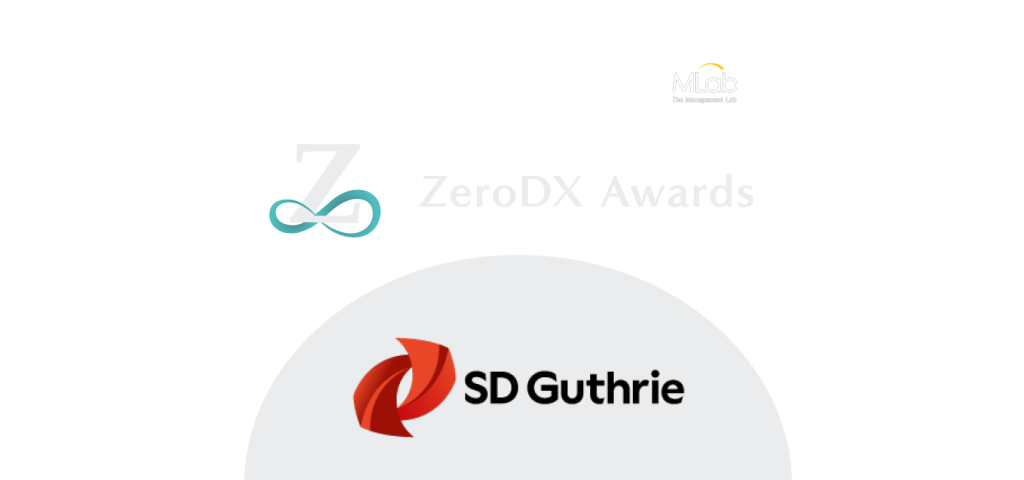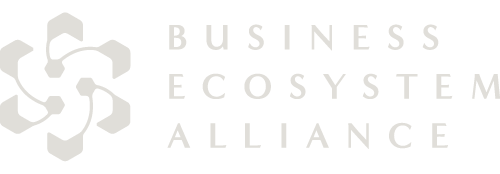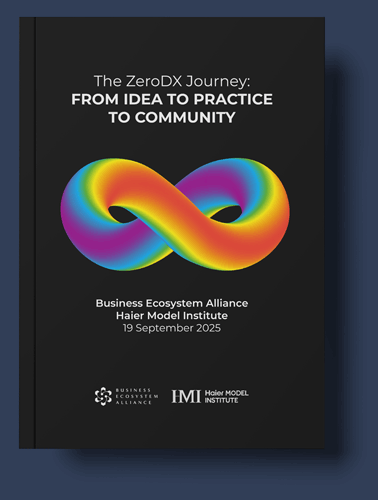
Reinventing Palm Oil in a commoditized industry
SD Guthrie today and in the future
SD Guthrie is one of the world’s largest producers of certified sustainable palm oil. The company began as a trading house, based in Singapore, over 200 years ago. Its history is closely tied to the development of the oil palm industry in Malaysia, when the company established the first commercial planting of oil palm in Selangor. In 1971, it was named Sime Darby Plantation, to highlight the growth of its upstream business, across Malaysia, Indonesia and the Solomon Islands. Its downstream business followed, which includes palm oil refineries, as well as marketing and distribution infrastructure. In 2024, the group renamed itself SD Guthrie, with its vision being to become a sustainable business ecosystem. This was a deliberate strategic move, a shift away from distinct Upstream and Downstream operations to an integrated customer-focused organisation, known as One-Stream. The group is present in over 90 countries around the world, including Asia, Europe, The Middle East and Africa, Australia and North America.
Transforming to a Customer-Focused Organisation
The company has a long history of technological developments, including a notable achievement in decoding the oil palm genome. This led to the development of high-yielding GenomeSelect™ seedlings. Between 2016 and 2019, these seedlings demonstrated 20% more yield, in the group’s plantations, and in 2021, its genome research was released into the public domain, to help accelerate cross-industry and collaborative research initiatives, into the Palm Oil genome. In essence, an R&D ecosystem was being developed.
Yet, an even bigger change, leveraging on the group’s capabilities, was underway. This transformation, which emerged during the COVID pandemic, saw severe labour shortages affecting the group, due to border closures and movement restrictions, across the group’s operations. This called for a re-examination of the role of innovation, in spurring growth and sustainability. The R&D function, which spans five (5) R&D centres, expanded to include open innovation, drawing on the capabilities of partners, from various start-ups, the group’s vendors and its multinational customers. In its upstream operations, and in collaboration with various technology partners, it developed the world’s first automated harvester (UGV) of palm oil and deployed a “digital workforce” of drones to support plantation work. In the downstream business, a cross-disciplinary Strategy and Innovation team was formed. This team explored various new technologies, held leadership mindset workshops to activate collaboration partners across the business and piloted innovative solutions, including the following areas:
- Customer-Centricity: SDG supplies both palm oil in bulk and differentiated products to some of the world’s largest food manufacturers. The transformation, which began in its downstream operations, now extends across its ‘One Stream’, where customer value is explored in collaborative projects, with its customers. This includes new approaches to improving customer satisfaction using product innovation that can attract a premium with end-users, developing low carbon palm-oil products, and using cross-functional teams to improve the customer experience. These teams would ultimately take on end-to-end accountability of customer interactions and be fully empowered to act across functions, in delivering new customer value.
- Digital Transformation: This has been the foundation of much of SDG’s transformation. The Group’s Strategy and Innovation team helped develop its digital ambition of “Connecting Insights, Delivering Beyond”. In the first few years of COVID-19 recovery, it focused on introducing business solutions through digitalization, including the use of advanced data analytics and digital platforms for workflow optimization. The integration of digital technologies across the supply chain, to include the customer interface, was key to this.
- Data management: a sub-component of the group’s digital transformation drive, helped make significant gains in access to and quality of data, to inform customer value decisions. As an example, SDG developed a Geographic Information System that leveraged satellite and 3rd party data, to provide a more granual view of palm oil plantations. As a result, the reporting of the impact of deforestation has improved markedly – a critical area for SDG’s customers, in meeting their ESG commitments. Deforestation is now reported by the industry in smaller units, on a x10 scale, e.g., reported in acres instead of hectares, and as from 2019, its open-access online tool (CrossCheck) allowing stakeholders to trace the sources of SD Plantation’s palm oil along the supply chain, for improved transparency.
- Automation: A customer-focused transformation required greater organisational agility, and so, with the use of open innovation methods, to practice precision agriculture, the automation of Fertilizer as well as Harvesting operations was undertaken. Improved predictability of the group’s products was key to grow in key markets. The group is also testing a new Geospacial-AI system, able to identify Ganoderma fungus-infected palms and treat these in time, again enhancing its premium positioning as sustainable palm oil producers.
- Sustainability Leadership: SDG aims to be a leader in climate and social performance – key performance areas for its customers, regulators and end-users. Here, its performance is tied to global efforts, by its Top 3 clients such as Unilever, to reduce scope 3 emissions and enable end-users to differentiate products, based on their sustainability performance.
The interest in Haier's philosophy and Zero Distance focused operating model
For SDG, the post-COVID recovery period was characterised by higher palm oil prices and so, despite supply chain challenges, the group was able to grow physical sales of Palm Oil products by 144% in 2023.
Where to from here?
By exploring Zero Distance, using RenDanHeYi and related practices, the group aims to:
- Accelerate Discovery – into the mindset and cultural practices that enable customer value transformation. This would likely include analysis of organisations who have made rapid progress from SDG’s current maturity level into ZeroDX, site visits and interactions with various Micro-Enterprises, and piloting organisational practices that empower employees to act, in support of the group’s transformation (starting with its cross-functional Customer Success teams)
- Instill agility – The many unpredictable changes facing the group and, notably, its customers, in a fractured external environment, requires agility in responding to a complex set of stakeholder demands. An example is the shift from palm oil being seen as a bulk commodity (however sustainably harvested) to over 50% of its production recognised as a differentiated set of products, that can help reduce carbon emissions and support broad sustainability targets.
- Apply learnings at Scale – The establishment of SDG’s Group Chief Operating Office was a marked departure from its traditional organizational model (and hence the years-long divide between ‘far from customer’ Upstream operations and ‘closer to customer’ Downstream operations). The Group COO’s office initial work focused on improving business processes such as Sales and Operations Planning (S&OP) and instill core process disciplines in the business. This is now evolving towards empowered and autonomous teams, as part of a new management philosophy and model.
- Adopt Digital Platforms – SDG has recognised the critical role which small holding farmers play in its ecosystem, yet these are often the least well served or connected to other ecosystem role-players. They suffer from inaccessibility to data that can improve their operations, sufficient market access on terms similar to larger, commercial-scale operations, or to sustainability practices (note: 668 independent smallholders were trained by SDG on sustainable agriculture practices and can readily serve as platform participants). SDG is therefore exploring digital platforms that can change this scenario, and several comparative case studies have been identified, where small-holding farmers, e.g., in forestry have scaled, tapping into lucrative markets requiring certification (such as the EU)
- Grow an Ecosystem of Partners – Early innovation efforts at SDG highlighted the power of a wide range of partnerships, from technology partners, that helped develop automated harvesters and drone-based solutions, to customers that actively support (and help fund) broader, industry-wide sustainability efforts. These partner ecosystems can now be harnessed to grow capabilities that can realise customer and end-user outcomes, e.g., Low carbon Palm Oil products.
- Formalize an experimental approach along customer scenarios – SDG has been experimenting with customer scenarios, to discover customer value and where the group could play a positive role. This is likely to scale, as part of adopting a new management model, along RenDanHeYi lines.
Various experiments within the group, to unlock customer value, and foster greater collaboration between org. units, highlighted the role of the group’s management model and how teams could be empowered to act in new directions, even if these conflict with current customer arrangements and, having asset-intensive operations, could challenge asset utilisation targets being met in the short-term.
The learning from SeamosUno is currently the foundation of the startup Nuqlea, whose objective is to compete in the Latin American construction materials market, which moves approximately US$150 billion annually and where only 3% of transactions are executed digitally. Starting in Argentina, and then expanding to Brazil and Mexico as the next stages, it currently ranks fifth among the largest iron sellers in the country.
Conclusions
SD Guthrie is in the midst of a customer-centered transformation that is accelerating. Leveraging early gains made in its digitisation and sustainability initiatives, we have rated their current state as moving from Self-Emerging to Self-Duplicating. This is primary seen in SDG being able to unlock new customer value, and where improving organizational agility and empowerment is recognised as the next ‘big leap’ to realising this transformation in full, e.g., moving from cross-functional customer success teams to a full ME architecture.
Where SDG’s greatest potential lie, in the medium to long term, is in generating shared ecosystem value. It plays a crucial role in the palm oil supply chain being able to realise not only its own internal targets but for its global customers to connect end-users to agricultural holdings across the board, unlocking new customer scenarios and providing a transparent chain of financial as knowledge flows. Digital platforms will play a key role in these, as would extending a mindset shift to its ecosystem partnerships.


